Whether your goal is to lose or gain weight, keeping track of the food that goes into your body is the best way to optimize your fitness results.
This simply implies monitoring and adjusting your calories and macronutrients, in accordance with your individual needs such as:
- Activity Level
- Weight
- Preferences of Macro Content
- etc.
And though all the tools you need are available at your fingertips, the overwhelming amount of information on the internet may make the process confusing for some people.
This is precisely why, in this article, we will tell you everything about how to track macros.
Without further ado, let’s get to it!

What Are The Three Macronutrients?
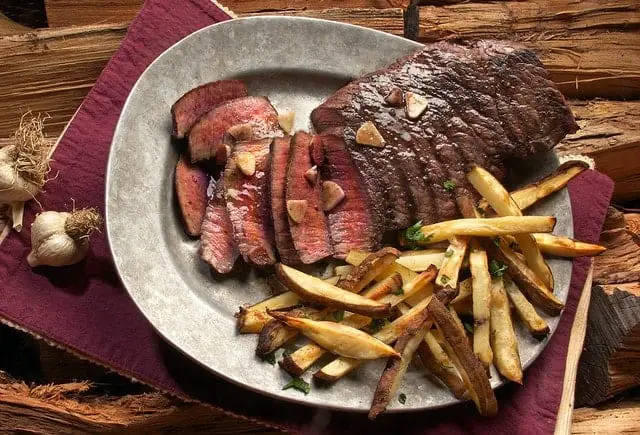
If you want to yield the best results possible with macro tracking, it would be best first to understand what macronutrients are and how they function.
As you may already know, foods and liquids are the primary energy sources, and their calorie (energy) content is made up of the three main macronutrients:
- Protein
- Fats
- Carbohydrates
The energy from these macronutrients enable you to:
- Do your physical and mental activities
- Sustain the healthy functioning of your physiological processes
- Regulate your weight
Now let’s briefly define the macros and explain its functionality in a nutrition plan.
Protein
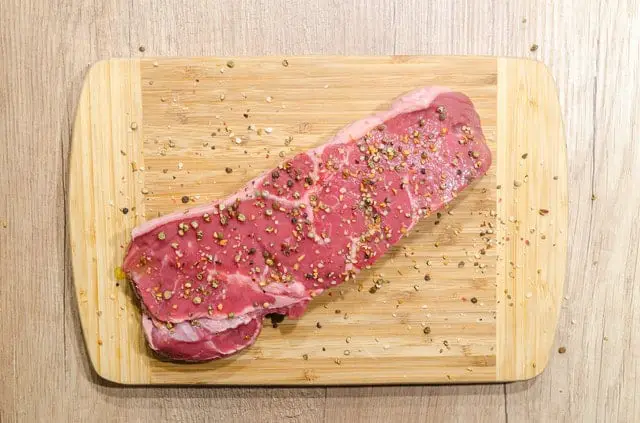
First and foremost, we have protein, which has 4 calories per gram and comprises the majority of the tissues and enzymes.
Deriving enough protein from food is essential not only for building and maintaining muscle mass but also for an array of vital processes.
In simple words, get your daily protein requirements if you want to perform better in the gym and recover well.
Optimal daily protein intake forms at
- 0.8-1g of protein per lb. of body weight
- Up to 40% of your total daily caloric intake.
That number varies, depending on factors like:
- Body composition
- Weight
- Age
- Activity levels
We recommend that omnivores (people who eat animal and plant products) derive the majority of their daily protein from animal foods because they have all the essential amino acids.
Vegans and vegetarians can combine grains and legumes like beans & rice, to get high-quality proteins.
Fats
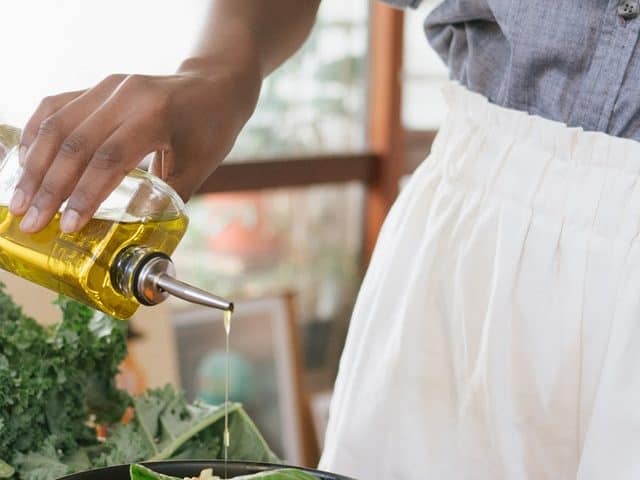
Secondly, we have fats, which provide 9 calories per gram and play significant roles in various processes.
Fats (fatty acids) mainly contribute to nutrient absorption and thermal regulation and are also used as alternative energy sources.
One of the essential functions of fatty acids is, namely, the regulation of the endocrine system.
Going too low in fat will lead to lower concentrations of testosterone, worse performance, low libido, low energy, and poor recovery.
The optimal daily fat intake forms at around:
- 0.35-0.45g per lb. of bodyweight
- 25-30% of your total daily energy intake
Most animal products contain healthy fats, but you can use olive & coconut oil, nuts, avocados, and fatty fish to match your daily fat needs completely.
Carbs

Last but not least, we have carbohydrates, which, just like protein, contain 4 calories per gram.
Unlike the first two macros, carbohydrates are not essential for the healthy functioning of the body.
Nevertheless, carbs are the king of high-intensity performance, meaning that if you want optimal workouts, you better eat your carbohydrate macros!
Optimal carbohydrate intake forms at
- 4-7g per lb. of bodyweight
- 40% of your total daily caloric intake
We recommend that you get your daily carbs from grains, legumes, fruits, and starchy vegetables, instead of processed foods that contain loads of sugar and fat.
How to Track These Macros
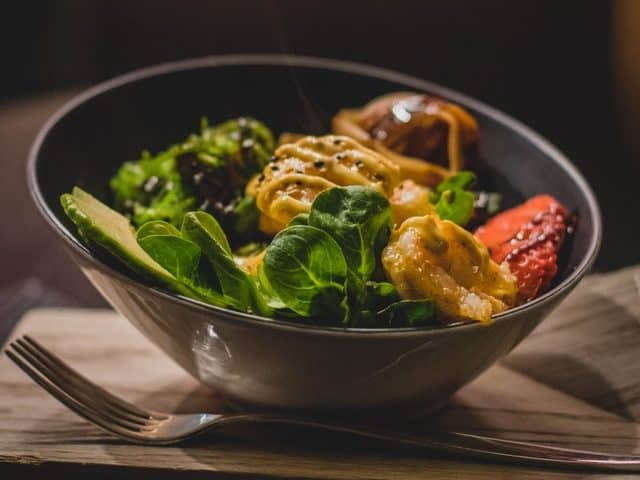
Alright, you are now a bit more familiar with the calorie content of each macronutrient and what their functions are.
Before you can track macros, however, you will need to calculate yours first.
Since everyone has their individual needs depending on factors like age and activity, I have created a calculator that will tell you everything that YOU need.
Use my Macros Calculator to find out your daily macros to lose weight, gain weight, or maintain weight.
Then we will talk about how to track them.
Weight Loss Macros Example

As you just learned, every one of us needs a different number of calories per day.
The higher your activity level (be it exercise or non-exercise), the more calories you eat.
However, in terms of weight loss, you have to consume less energy than you use daily consistently.
This is the so-called “Eating in a caloric deficit,” and it is REQUIRED to lose weight.
Example:
- Ben is 180 lbs.
- He trained for 3 years and has some muscle mass.
- He feels chubby and wants to bring some muscle definition by losing fat.
- Ben works a sedentary job and lifts 3-5 days per week.
- All of the above, plus other factors, make his body burn 2600 calories per day to maintain weight.
Ben would need to consume 500 calories less (daily) than his maintenance level to lose fat at a healthy rate.
For Ben to lose weight, he would eat (roughly) 2100 calories per day.
Here’s what Ben’s weight loss macros would look like:
Grams of Protein: 180 grams (720 calories / 4 = 180)
Grams of Fat: 81 grams (730 calories / 9 = 81)
Grams of Carbs: 162 grams (650 calories / 4 = 162)
Everyday, he would track his macros with MyFitnessPal and try to hit the goals above.
Weight Gain Macros Example

But what if Ben was pleased with how lean he was and wanted actually to GAIN muscle mass?
Well, then he would achieve the best results if he ate more calories than his maintenance levels or a “Caloric surplus.”
Example: Ben’s maintenance levels are 2600 calories per day, and he would achieve optimal results if he added 10% of those calories on top.
This makes his bulking needs roughly 2860 calories per day.
Here’s what Ben’s weight gain macros would look like:
Grams of Protein: 200 grams (800 calories / 4 = 200)
Grams of Fat: 90 grams (810 calories / 9 = 90)
Grams of Carbs: 313 grams (1250 / 4 = 312.5)
And while this is a relevant example, the fact of the matter is that not everyone is like Ben.
We all are of different ages, height, and weight, and we all have different body compositions and activity levels.
This is exactly why specific macronutrient ratios may work better for certain individuals.
Let’s talk about the options.
Step 1: Determine Your Macronutrient Split
After having calculated your daily calories, it is time to pick a macronutrient split that would be suitable for you.
There are a couple of different options you can go for, such as the 40/40/20 & 35/35/30 splits.
Once you determine this, we can start tracking macros.
Let’s have a look at them!
The 40/40/20 Split
The 40/40/20 split implies that 40 percent of your calories will come from protein, another 40 percent will come from carbs and the remaining 20 percent will be from fat.
This split is pretty much one of the most optimal choices, as it will provide the body with plenty of proteins, carbs and enough fats.
In turn, this will give the body enough resources for sustained high-intensity performance and recovery afterwards.
40% Protein
If your daily caloric intake is 2000 calories, you’d need to multiply 2000 by 0.4 to get your calories from protein for the day.
- 2000 x 0.4 = 800 calories from protein
Because protein has 4 calories per gram, we divide 800 by 4 to get the exact amount of protein you’d need per day.
- 800 / 4 = 200 grams of protein
40% Carbohydrates
Because we are using the same percentage for carbs (40%) as protein, the calculation is the exact same.
Therefore you would have however many grams you had for protein (200g).
20% Fat
Finally, we have the fat, which should make up roughly 20% of your daily caloric intake.
If your daily caloric intake is 2000 calories, you multiply 2000 by 0.2 to get your daily calories from fats.
- 2000 x 0.2 = 400
Because fat has 9 calories per gram, you divide 400 by 9 to get the exact amount of fat per day.
- 400 / 9 = 44 grams of fat per day
The 35/35/25 Split
This second option implies that 35 percent of calories will be derived from protein, 35 from carbs and 30% from fats.
It’s the same calculations as the 40 40 20 split, just with 0.35 as the multiplier instead of 0.4.
All in all, your macros can fluctuate daily as long as:
- You “hit” your number of calories for your fitness goal
- You get enough protein (From 0.8 to 1.2g of protein per lb. of bodyweight)
Ultimately, the most important thing is to have a good balance of all 3 macronutrients, as all of them are functional components.
For example, if you do not consume enough protein, recovery will be suboptimal.
If on the other side, you do not consume sufficient amounts of carbohydrates, your athletic performance will drop.
And last but not least, eating insufficient amounts of fat will lead to lower concentrations of testosterone.
Bottom line – Don’t completely exclude any of the 3 macronutrients.
Find the balance and ultimately pick something that you will enjoy and adhere to!
Make it sustainable.
Step 2: Pick Your Macronutrient Sources

Picking the right macros split is just one of the factors that makes a diet enjoyable and sustainable.
The second thing is namely, picking the right foods, which you can eat daily and enjoy.
Below, I will give you my top picks for each macronutrient, which you can use in your nutrition plan.
Remember that you can use any seasonings and herbs you want, as long as you hit your daily macronutrient goals!
Protein Sources
- Whole eggs
- Egg whites
- Beef
- Fish
- Chicken
- Turkey
- Pork
- Dairy products
- Whey protein
- Beans, lentils & legumes
Carbohydrate sources
- Oats
- White rice
- Brown rice
- Beans, lentils & other legumes
- Starchy vegetables
- Wholegrain bread
- Wholegrain pasta
- Fruits
- Sweet potatoes
- Regular potatoes
Fat sources
- Avocados
- Coconut oil
- Olive oil
- Fatty fish
- Beef
- Pork
- Nuts
- Whole milk
As you can see, there are plenty of choices. All you have to decide is how to implement these foods into your diet and how to start tracking macros.
Dieting is not supposed to be boring and unbearable, and this is exactly why I created my book on flexible dieting and IIFYM here.
Step 3: Use These Tools to Start Tracking Your Macros

Alright, we are almost down to a system! Now it’s time to arm yourself with the right tools and you can start tracking your macros.
Let’s have a look at everything you need.
1. Food Scale

The food scale is the single most important thing in your macro tracking arsenal.
It will allow you to know the exact amount of food you are consuming – Not more, not less.
Using it, you will easily match your daily caloric needs with no hassle.
This is especially helpful for weight loss.
Here are our top 2 affordable recommendations for food scales:
- The GreaterGoods digital food scale, which you can find HERE.
- The Etekcity Food scale, available HERE.
2. Measuring cups
Using measuring cups is a good alternative to the already functional food scale.
This part of your equipment will allow you to get precise measurements of a variety of foods, such as grains and powders.
We recommend using the affordable “New Star” measuring cups & spoons, which you can find HERE.
3. MyFitnessPal (MFP)
Last but not least, you are going to need an accurate app for calculating macros, which can help you track your macros for your meal plan.
MyFitnessPal is the single best application for this purpose, as it can calculate macros accurately for a variety of foods.
Here’s how to setup your MyFitnessPal:
1. Download & install the App from your App store

2. Sign up (You can do so via email or facebook)
Make sure to use our macros from our Macro Calculator and not the calories and macros MFP gives you.

3. Go to your food diary and click the “+”on any meal of the day
You can add meals by searching for the food in the MFP database or by scanning barcodes.

4. Find a food, select the amount and add it to that meal

Done! Now you know the calories and macros this food contributes with to your daily total.
You can also scan barcodes of food boxes and containers to figure out the macro calculation based on the nutrition label.
Here’s how you would use a food scale to track your macros:
Example of Tracking Macros
Alright, if this sounds a bit too complicated, let us give you a step-by-step example of how to track a meal.
To know how many calories and macros that a meal gives you, you need to know the exact amount of food you’re going to have.
So let’s say, your meal consists of:
- 8 oz. grilled chicken
- 200 grams of steamed sweet potato
- 50 grams of mozzarella cheese
To figure out the calories and nutrients this meal gives you, you simply have to:
- Go to your MFP food diary and click the + on a meal
- For the best macros calculation, scan the barcode of the food (if there is one)
- Weigh out the amount of food listed above on your food scale.
- Enter each product with its respective quantities, separately
- Add the products to your MFP diary
This particular meal would give you 62 grams of protein, 17 grams of fats and 44 grams of carbohydrates.
In total, this contributes to your daily nutrition with 550 calories.
Here’s another example on how you track your macros:
Conclusion
And that’s all there is to it. Tracking macros may seem hard at first, and it can be frustrating at the start.
However, after the first couple of weeks, or what I like to call the “initiation phase,” it becomes a habit and you’ll never look back.
This is how I saw my fat loss transformation and lost 50 lbs.
Tracking macros was my savior and it can be yours too. It’s what I teach here.
If you have any questions or concerns, leave them in the comments and I’ll answer them ASAP!
Cheers,

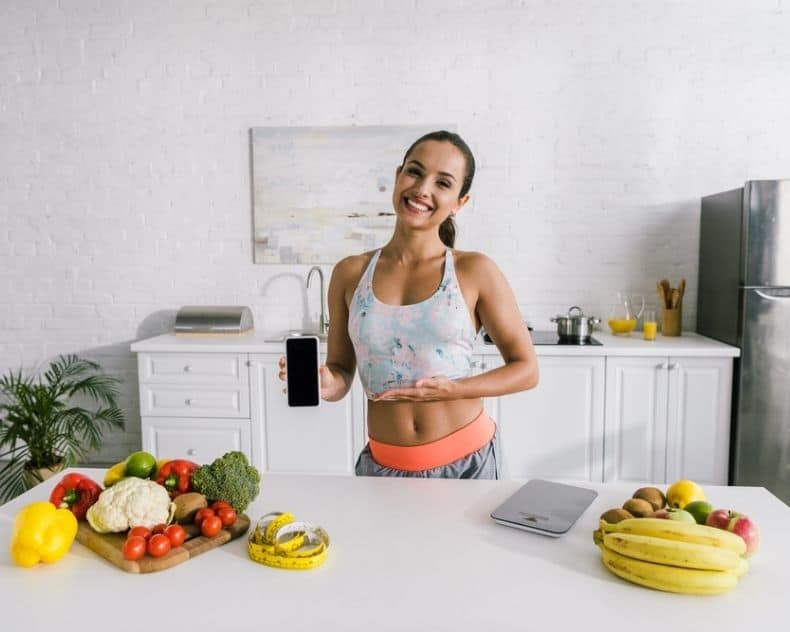

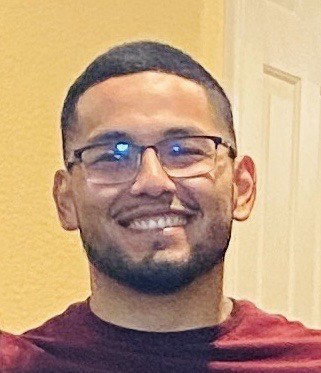

1 thought on “How to Track Macros: Ultimate Guide for Beginners”